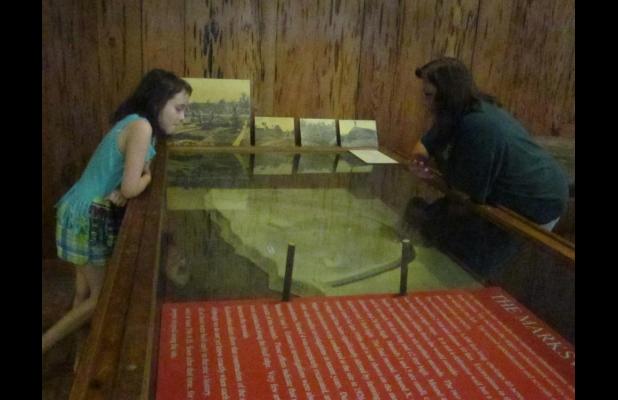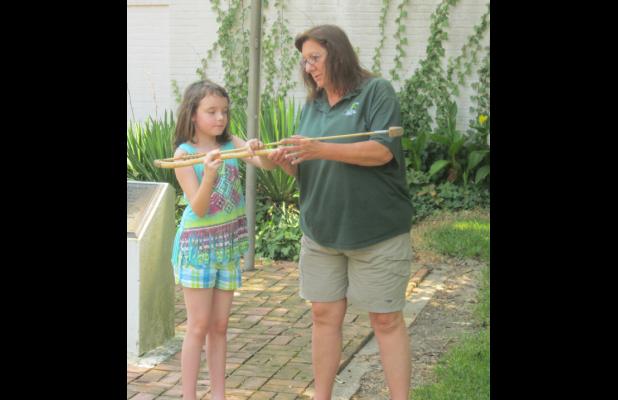
Susan Veillon (right), a museum guide, shows visitor Arianna Daye a model of the Marksville Prehistoric Indian park. The model shows visitors how the site looked when it was in use as a sacred ceremonial site from 100 B.C. to 400 A.D. {Photo by Raymond L. Daye}

Susan Veillon, from the Office of State Parks Southern Regional Office at Chicot, explains items used by ancient residents of Avoyelles to Arianna Daye, 10, of Marksville. Items on display are replicas of items discovered at the Marksville archaeological excavations. {Photo by Raymond L. Daye}

Museum guide Susan Veillon helps a young visitor try her hand at the atlatl -- or “throwing stick” -- which the prehistoric hunters of this area used to bring down game to feed their families. {Photo by Raymond L. Daye}

Museum visitor Arianna Daye, 10, of Marksville, poses in front of one of the burial mounds on the grounds of the Marksville State Historic site. {Photo by Raymond L. Daye}
Marksville Historic Site provides look at earliest chapter of Avoyelles' story
